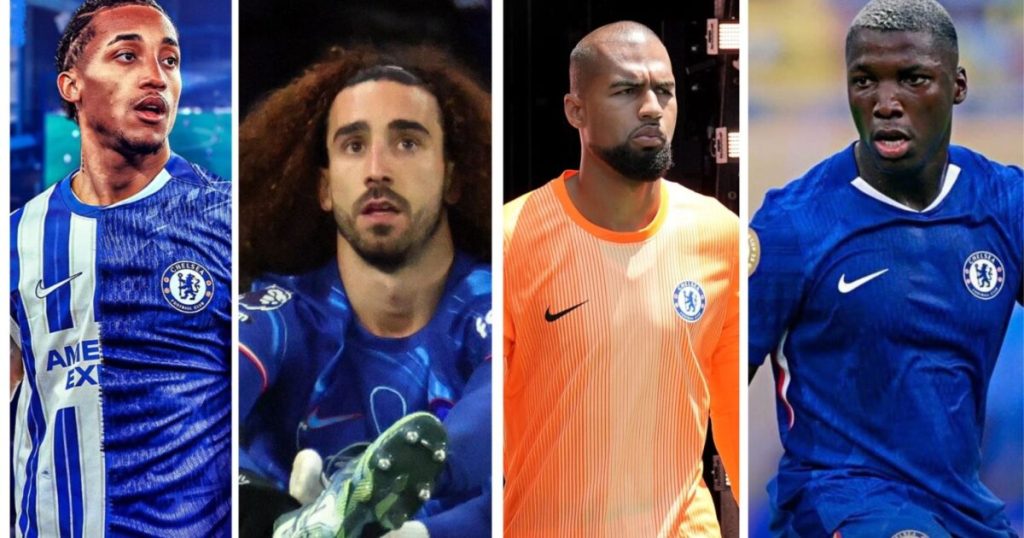Chelsea Football Club’s acquisition of Joao Pedro from Brighton & Hove Albion signals not only a strengthening of their attacking options but also a continuation of a notable trend: the Blues’ sustained recruitment from the South Coast club. This impending transfer, valued at up to £60 million, represents another significant investment in a player honed at Brighton, further solidifying the pipeline of talent flowing from the Amex Stadium to Stamford Bridge. The deal, which includes a seven-year contract for the 23-year-old Brazilian forward, brings Chelsea’s total expenditure on Brighton players within the last three years to a staggering £263 million, a figure that underscores the London club’s apparent faith in the Seagulls’ player development and recruitment model. This significant financial outlay also includes the acquisition of then-Brighton manager Graham Potter in 2022, further highlighting the intertwined histories of the two clubs in recent years.
Joao Pedro’s arrival at Chelsea is anticipated to provide much-needed attacking versatility, as he is capable of operating as a central striker or deployed across the front line. This adaptability is a key factor in Chelsea’s pursuit of the player, as it offers tactical flexibility and provides cover for various attacking positions. The young Brazilian’s potential debut for his new club could come sooner than expected, with the possibility of him featuring in Chelsea’s Club World Cup campaign. The quarter-final clash against Palmeiras presents a potential platform for Pedro to showcase his skills on the global stage, marking an immediate return on Chelsea’s investment. This rapid integration into the squad highlights the urgency with which Chelsea views this signing and their eagerness to incorporate his talents into their tactical framework.
This latest acquisition further cements the burgeoning relationship between Chelsea and Brighton. The two clubs have evidently cultivated a mutually beneficial arrangement, with Brighton profiting handsomely from the sale of their key players and Chelsea gaining access to a proven pool of talent. The inclusion of a sell-on clause in Pedro’s deal further illustrates the intricate financial arrangements between the two clubs, ensuring Brighton benefits from any future transfer involving the Brazilian forward. This ongoing partnership suggests a strategic alignment between the two clubs, with Chelsea recognizing the value of Brighton’s player development system and Brighton leveraging Chelsea’s financial muscle to maximize their returns on player investments.
The list of players who have made the switch from Brighton to Chelsea in recent seasons paints a clear picture of this evolving transfer dynamic. Starting with Marc Cucurella’s £62 million move in 2022, the trend continued with Robert Sánchez joining for £25 million in 2023. The most substantial transfer, however, was that of Moisés Caicedo, who commanded a fee of £115 million (including add-ons) in the same year, setting a new British transfer record. These high-profile transfers, coupled with Joao Pedro’s impending arrival, establish a clear pattern of Chelsea tapping into Brighton’s talent pool.
The repeated acquisitions from Brighton raise questions about Chelsea’s broader recruitment strategy. While the individual talent of these players is undeniable, the sheer volume of transfers from a single club suggests a potential over-reliance on a specific source. This concentration of recruitment from one club could limit the diversity of playing styles and potentially hinder the development of a cohesive team identity. It remains to be seen whether this strategy will ultimately prove successful in the long term or whether a more diversified approach to player recruitment would be more beneficial for Chelsea’s sustained success.
Furthermore, the significant financial outlay on Brighton players begs the question of whether Chelsea is overpaying for talent readily available elsewhere. While Brighton’s player development model is clearly effective, the premium paid by Chelsea for these players could be viewed as excessive. The potential for inflated transfer fees in such a focused recruitment strategy warrants scrutiny, particularly given the financial regulations governing football clubs. Chelsea’s sustained investment in Brighton players represents a calculated gamble, and the ultimate success of this strategy will be judged by the collective performance of these players and their contribution to Chelsea’s trophy cabinet. This ongoing transfer narrative continues to be a compelling case study in the complexities of modern football recruitment and the evolving relationships between clubs.


